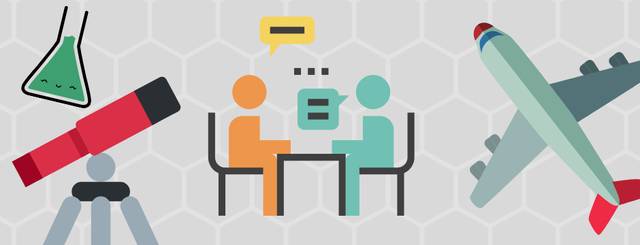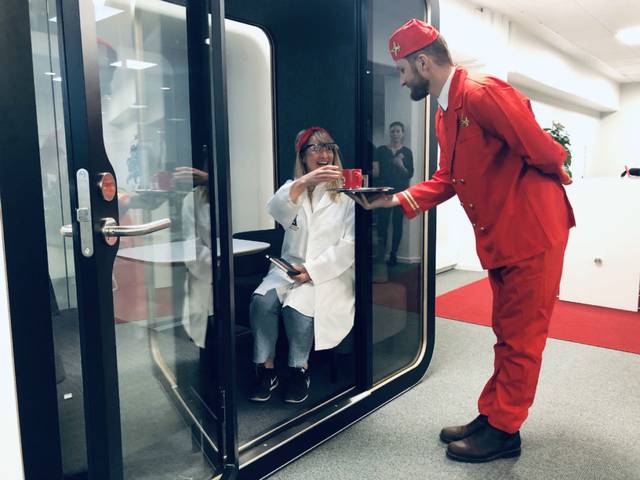
This post focuses on “think aloud” studies where we let a user think out loud while navigating through a real-life scenario together with a test leader.
Why do visitors do what they do? Is there something preventing the visitor from becoming your customer today? What are the visitors' motivations to either buy or not buy the product or service you offer?
As a conversion specialist, it is in my best interest to care about the people I want to sell to. Feeling compassion and empathy for my visitors is not just about being accommodating and helpful. It is also about understanding what motivates the customer and how you can reduce friction Fogg Behavior Model so that the user can achieve their goal. Usability tests help you get closer to and understand your users better.
After many years in CRO, we at Conversionista! know that you can never predict how your visitors will use and experience your brand digitally. The only way is to observe a user while they navigate your platform. Simply put - put a mobile in the user's hand and sit next to them.
I promise you will gain insights into how users interact with both your design and how they perceive your copy. You will save both time and money because you will stop guessing why users do what they do. And if you are on a tight budget, you don't need the latest technology like eye-tracking - but you do need to be a killer test leader. Let me now teach you how you can learn more from your users.
Els Aerts, User Research Guru CJAM 2018 in Oslo.
Recording with an eye tracker, capturing audio with a mic, and capturing what happens on the screen is a common test setup, but the test leader is actually more important than the technology. If you steer the test off course, the insights are unusable. Therefore, it is important that you take on these three CRO hats during a test to achieve your goals. Thanks, Jared Spool, for the inspiration!
The Flight Attendant Hat
When you meet the user, you want to make them feel comfortable. Comfortable enough to perform the task you have ahead of you. Therefore, your work begins even before the actual test starts. Be welcoming, answer questions, and explain how the test will proceed. As a test leader, you make sure the user has their seatbelt on, offer coffee, prepare the user for the start, and take them on a journey through your digital experience.
My colleague Enes is an expert at this flight attendant hat - he uses this tool when guerrilla testing in the city or at Conversionista's office in Oslo. If the participant feels very nervous, his pro tip is to say: “You can't do anything wrong, it's not you we're testing but what actually happens on the screen.”
Another thing the user might not think about is what happens to the material you record. Show the user what you are collecting, e.g., audio and video. Explain whether the study will be used internally or externally and whether the user will remain anonymous. How long will you keep the data? And how do you handle personal data in true GDPR spirit?
There you go, now you're almost ready to fly!

The Researcher Hat
As the researcher, you set clear goals for your study, create a real-life scenario, prepare which flow the user should go through, and finally, you do a pilot test. You are doing this test to improve your customers' online experience.
What data do you need to collect to be able to analyze? How much impact do you have on the participant in the test?
As a test leader, it is important to be aware of your confirmation bias both in analysis and when leading the test. Confirmation bias can occur if you have a pet question or perhaps designed part of the flow in the test. It means that you do not see or hear the criticism from the user, but only take in the praise. You should rather try to find errors that disprove your theory instead of confirming them. This scientific method is called “falsification.”
The Host Hat
During classic usability tests, there is one test participant and one test leader in the room, but you can also add more participants with an observation room. Observers can follow what happens via the screen or with a camera in the room. But sometimes you as the test leader need to fill in what is happening. Think of yourself as the host David Attenborough responsible for presenting your program to the viewers.
It is important that you as the test leader let the user be the center of attention, let them do the talking. Ask a question and wait for the participant's answer or reaction. Do not be stressed to fill the silence with your observation or a follow-up question. Listen and discover what happens during your important minutes together. Your purpose is for the guest to talk and actually want to talk - just like the legendary host Ellen DeGeneres. Watch an example here.
At the beginning of this clip, Ellen invites the guest to share their experience from their perspective. She then takes a step back and lets the guest be the center of attention. She listens. That is exactly what we want to do.
As a test leader, there is a clear tug-of-war between being a host and a researcher. In the clip with Ellen, she and the guest have a great time, and towards the end, it becomes even more enjoyable - almost chaotic. Think about what your body language and tone convey. Be a neutral test leader and react neither positively nor negatively. This is of course difficult, but having practiced the script and scenario before the test/recording can really help here.
Hats off to you who manage this.

These techniques are powerful and can ensure you bite your tongue when you are close to asking that leading question.
Return of the Jedi: Here is an easy technique to master if the user asks you a question. Use the boomerang technique and send the question back. “What do you think?”
“How would you do it if I weren't here?” “What would you do if you were at home?”
Echo Mind Tricks: If the user mumbles or forgets to think out loud, you can repeat the last thing they said and then let the user complete or clarify their thought. Understand the user's thought process.
Expert Level: - Luke, I am... (admit you filled in “your father”) = don't ask the whole question, don't give everything away directly, but let the user fill in with their answer. If the user is stuck, give them half a sentence or ask, for example, half a question.
Happy Converting and may the force be with you.
Johanna